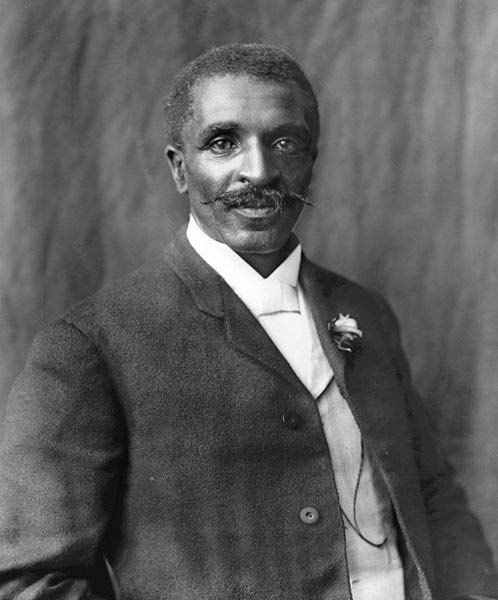| George Washington Carver | |
|---|---|
 |
|
| Scientist & Inventor | |
| Specialty | Alternative crops |
| Born | Jan., 1864 Diamond, Missouri, U.S. |
| Died | Jan. 5, 1943 (at age 79) Tuskegee, Alabama, U.S. |
| Nationality | American |
George Washington Carver is considered one of the most famous and influential of all African-American scientists. His main field of study was agricultural science and his trailblazing work has major impact on the farming industry throughout the Industrial Revolution period and even far beyond it.
Carver’s Early Years
Carver was born in Diamond, MO. He was born a slave as his mother and father, Mary and Giles, were slaves owned by a man named Moses Carver. Carver was not George’s real last name but, since he was the property of his master, he was known as Carver’s George.
When slavery ended, George wished to attend school, but the closest school that would accept blacks was ten miles away. Undaunted, George traveled the ten miles to the other school so he could get an education. He would tell people at the school his name was Carver’s George and, not knowing this was a reference to his former slave master, they simply thought it was his real last name. Hence, he became known as George Carver.
College Education and Beyond
When he grew older, Carver applied to a number of different colleges. Highland College in Kansas accepted him and them revoked the acceptance when they discovered his race. Eventually, he was accepted at Simpson College which was located in Indianola, IA, where he studied art and music.
Carver did show a unique love and interest for plants. Upon seeing this, a member of the college suggested he study botany at the Iowa State Agricultural College located in Ames. He enrolled in 1891 and was the first African-American student. In time, he would become the first African-American faculty member.
Carver would go on to work at the Iowa Experiment Station. Doing so helped establish him as a nationally prominent botanist.
Carver at the Tuskegee Institute
Booker T. Washington was running the Tuskegee Institute in Alabama and he hired Carver to run the Agriculture Department. This was not a short-term tenure, either. Carver would hold the position for 47 years starting in 1896. Under Carver’s guidance, the institute became known for its tremendous amount of research that was performed on its premises.
Actually, a lot of work was performed in the field. Carver developed a mobile lab and instructional platform that allowed him and various students to travel to local farmers and instruct them in new innovations. Among the top innovations learned at the institute were helpful new methods of crop rotations and soil improvement. Carver would also travel into poor black rural communities to help people learn farming as a means of self-sufficiency.
Speaking of sufficiency, Carver developed Agricultural Experiment Station farms for the institute and the harvests generated as a result were sold, in part, to help finance the institute. Carver was receiving a generous salary to work at the institute. In a way, it could be said he actually paid his own way thanks to the revenue he was generating for the school.
Peanuts and Cotton Soil Rotation
Carver is well known for his work with peanut farming. At the time, cotton growing was depleting soil in the south. Peanut farming was seen as a viable option to help the ruined soil since it aided in returning much needed nitrogen to it. Peanuts, however, were not all he worked on to achieve nitrogen restoring benefits from crop rotations. He also recommended soybeans and sweet potatoes as viable alternatives.
All of Carver’s suggestions for effective crop rotation plans were taken seriously and they all did yield helpful and viable results. The problem of soil ruining cotton farming was mostly solved. It can be claimed that Carver’s work in this particular area contributed the most greatly to his eventual fame in the agriculture and scientific community.
Achieving Fame
Carver became very famous for his work in this area. His celebrity status led to him becoming a published writer and he gained even more fame as a result. Through magazine’s such as Reader’s Digest, he was reaching a larger audience outside the agriculture and academic communities.
Carver’s Final Years
On January 5, 1943, George Washington Carver died at the age of 78 after suffering a bad fall down a flight of stairs in his home.